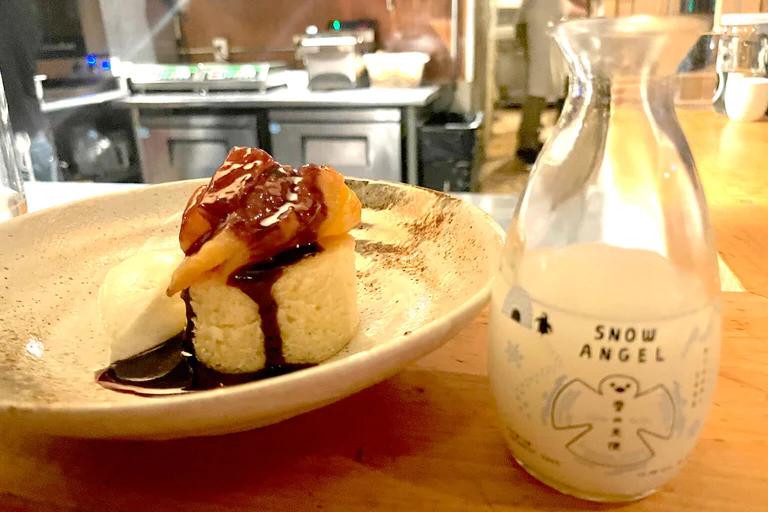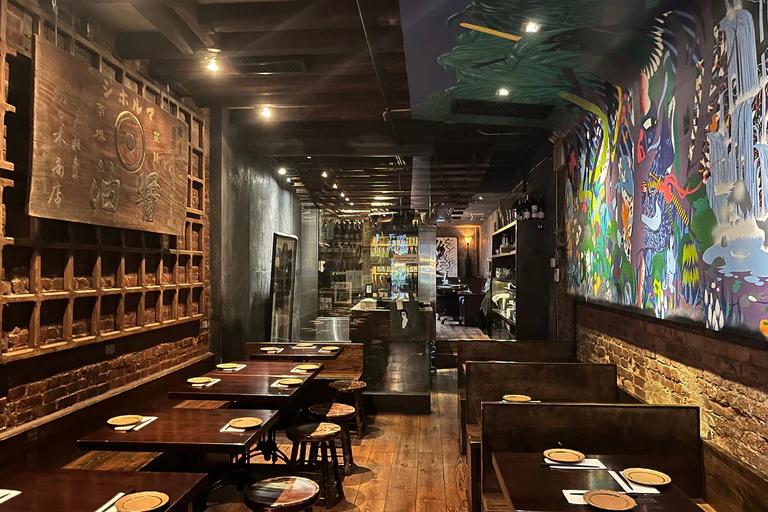The cherry blossom is an iconic flower of Japan, and it plays a very important cultural role. Late March to early April is cherry blossom season in Japan, and many people gather with friends and family to go out to parks and other spots for cherry blossom viewing parties, which are called “hanami.” The essential items for hanami are bentos and beverages. You can also include snacks and appetizers from Tippsy Marketplace.
Here are some simple and easy spring recipes and sake pairing ideas for your hanami party.
What’s on the menu
- Pink chirashi sushi with salmon and ikura
- Takenoko bamboo shoot rice with kombu and edamame
- Karaage fried chicken
- Pork belly vegetable rolls
- Tamagoyaki Japanese omelet
Pink chirashi sushi with salmon and ikura
- 300 grams uncooked white rice
- 370 milliliters water
- 2 slices (or 250 grams) salted salmon
- 1 tablespoon sake
- 1 tablespoon water
- 2 tablespoons white sugar
- 3 tablespoons rice vinegar
- 4 shiso leaves
- 2 tablespoons seasoned ikura (salmon roe)
- White sesame (optional)
Step 1: Rinse uncooked rice with water well. Add rice and water to rice cooker (or pot) and cook rice.
Step 2: In a small pan, add sake, water and salmon and cook with medium heat with the lid closed until salmon is thoroughly cooked. Debone salmon.
Step 3: Mix sugar and vinegar and add half of the mixture to the cooked rice while it is hot. Blend well and repeat.
Step 4: Add thinly cut shiso leaves and white sesame (optional).
Step 5: Add salmon and garnish with ikura (salmon roe) after the rice is completely cooled down.
Takenoko bamboo shoot rice with kombu and edamame
- 300 grams uncooked rice
- 370 milliliters water
- 150 grams takenoko bamboo shoot (pre-cooked, cut in small pieces)
- 2 tablespoons soy sauce
- 2 tablespoons sake
- 2 tablespoons mirin
- 1 teaspoon dashi powder
- 1 teaspoon sugar
- 10 centimeters dashi kombu (dried kombu used for dashi stock)
- Edamame (optional)
Step 1: Rinse uncooked rice with water well. Add rice, water, bamboo shoot, soy sauce, sake, mirin, dashi powder, sugar and dashi kombu to rice cooker (or pot) and cook rice.
Step 2: Garnish with edamame (optional).
Pro tip: I love cooking rice in “donabe” (Japanese clay pot). It provides nice texture to the rice grains, and helps bring up flavors.
Step 3: Mix sugar and vinegar and add half of the mixture to the cooked rice while it is hot. Blend well and repeat.
Karaage fried chicken
- 500 grams chicken thigh with skin
- 2 tablespoons sake
- 1 tablespoon minced garlic
- 1 tablespoon minced ginger
- 1 tablespoon soy sauce
- 1/2 teaspoon salt
- 2 teaspoons sesame oil
- 3 tablespoons katakuriko (potato starch)
- 2 cups of vegetable oil for frying
Step 1: Cut the chicken into bite-size pieces. Do not remove skin.
Step 2: In a large Ziplock bag, add sake, garlic, ginger, soy sauce, salt, sesame oil and mix well together.
Step 3: Add chicken to the bag and massage the marinade into the chicken. Make sure the chicken is covered in the liquid. Let it sit in the fridge for 1 hour.
Step 4: Take the bag from the fridge and take out chicken. Remove excess liquid with paper towel.
Step 5: In a new Ziplock bag, add the chicken and katakuriko (potato starch). Close the lid and shake well. Remove excess powder and fry with medium heat until golden.
Pro tip: For a crispy outside and moist inside, first fry in medium heat until the outside firms up, then transfer to a cooling rack and let it rest for 3 minutes. Then turn to a higher temperature and re-fry for another 2-3 minutes until golden.
Pork belly vegetable rolls
- 200 grams thinly sliced pork belly
- 1/2 carrot
- 6 green beans
- Pinch of salt
- 1 tablespoon katakuriko (potato starch) or flour
- 1 tablespoon soy sauce
- 1 tablespoon sugar
- 1 tablespoon mirin
- 1 tablespoon sake
Step 1: Lay pork belly slices flat, side by side.
Step 2: Cut carrots and green beans the same length as pork belly layers. Sprinkle salt and microwave for 30 seconds. Make sure to microwave in a tupperware or microwave-safe cover so the vegetables do not dry out.
Step 3: Let the vegetables cool down, then roll with pork belly. Sprinkle katakuriko.
Step 4: On a heated pan, add some oil and sauté the rolls until the pork is evenly cooked.
Step 5: Add sugar, mirin, soy sauce and sake to the pan until thickened. Take out the rolls and let cool on a plate.
Step 6: Once completely cooled, cut the rolls to about 1-inch thickness.
Tamagoyaki Japanese omelet
- 3 eggs
- 2 tablespoons milk
- 1 tablespoon sugar
- 2 teaspoons mayonnaise
- 1 teaspoon mentsuyu (or 1/2 teaspoon soy sauce)
- Chopped chives (optional)
- 1 teaspoon vegetable oil for the pan
Step 1: In a small bowl, add all ingredients except for the vegetable oil and mix well.
Step 2: On a heated pan, add vegetable oil, then add ¼ of the mixture. Roll and repeat 4 times.
Pro tip: I added mayo in the recipe. It helps stabilize the mixture and prevents it from sticking to the pan, so you can make a beautiful tamagoyaki. Use a rectangular tamagoyaki pan if possible (available in most Japanese supermarkets).
Tippsy’s recommended sake for hanami bento
For pairing with the bento, we chose one dry sake, Dewazakura “Oka” Cherry Bouquet, which pairs well with dashi flavor; and one slightly sweet sake, Kizakura “Hana Kizakura,” which matches well with the recipes involving sugar and mirin.
Dewazakura “Oka” Cherry Bouquet
Established in 1892, Dewazakura Sake Brewery is headquartered in Yamagata prefecture in the Tohoku region. The ginjo label “oka” means cherry blossom flower, which is perfect for the hanami occasion. The sake has an aroma of white bouquet such as acacia, lily and honeysuckle, followed by a touch of flint. On the palate, the sake is very fruity and smooth with a flavor of peach and cantaloupe, plus a hint of daikon radish. This is a medium-bodied sake that can be paired with a variety of cuisines. From the bento menu, I recommend pairing it with takenoko bamboo shoot rice.
Kizakura “Hana Kizakura”
Established in 1925, Kizakura is headquartered in Kyoto prefecture in the Kansai region. This sake is made with yeast derived from actual yellow cherry blossoms in Kizakura. Kizakura is the name of a rare variety of satozakura cherry tree that produces yellow, double-petaled blossoms. What could be better for a hanami party?
The aroma starts off with strawberry, Asian pear and cotton candy. This sake is 12% alcohol, which is slightly lower than the average sake. It has a flavor of white peach, ripe green apple and cucumber. This is a crisp, light, easygoing sake. Because it has a touch of sweetness, it pairs well with similar flavors, especially those recipes involving sugar and mirin. From the bento menu, I recommend pairing with chirashi sushi and pork belly rolls.
Note: In Japan, it is legal to drink alcohol in public places such as parks and entertainment venues. Please follow your local regulations and laws for permitted drinking areas.















